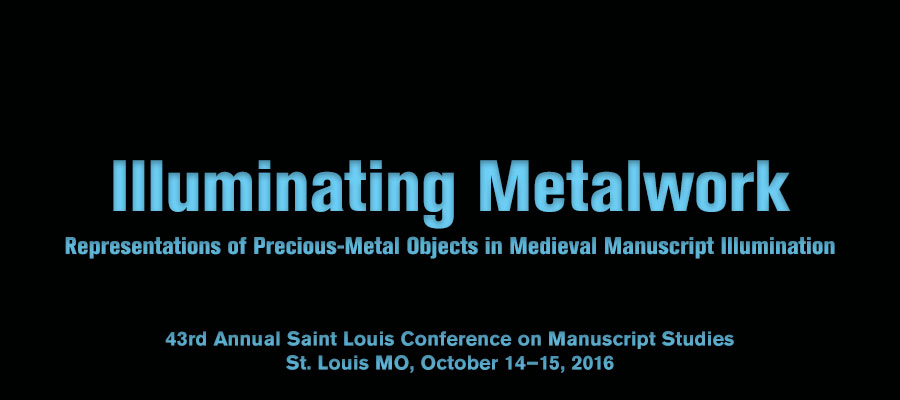Illuminating Metalwork: Representations of Precious-Metal Objects in Medieval Manuscript Illumination, panel at the 43rd Annual Saint Louis Conference on Manuscript Studies, Vatican Film Library, Saint Louis University, St. Louis MO, October 14–15, 2016
Manuscript illuminations frequently place special emphasis on precious-metal objects both sacred and secular, such as chalices, reliquaries, crosses, tableware, and figural sculptures. Artists typically rendered these objects using gold, silver, and metal alloys, “medium-specific” materials that contrasted dynamically with the surrounding color pigments. The visual characteristics of these depicted metal objects — lustrous yet flat, almost anti-representational — could dazzle, but perhaps also disorient, the viewer: they catch the eye while creating a fertile tension between the representation of an image and the presentation of a precious stuff, between the pictorial and the material. A gold-leaf chalice signals its real-world referent both iconically, via its shape, and indexically, via its metal material, a doubled representation unavailable to the remainder of the painted miniature. Such images can take on added complexity if intended to represent known real-world objects.
This panel seeks to take inventory of how these precious-metal objects were depicted and how they generated meaning. Possible themes include: chronological/geographical specificities in the representation of metalwork in manuscript illuminations; depictions of precious-metal figural sculpture, including idols; technique (e.g. pigment vs. leaf); the semiotics of metal on parchment; and whether we can speak of “portraits” of particular objects and/or visual “inventories” of particular collections. We welcome proposals that consider Western, Byzantine, and/or Islamic manuscript illumination from the early through the late Middle Ages.
Panel organizers: Joseph Salvatore Ackley and Shannon L. Wearing
